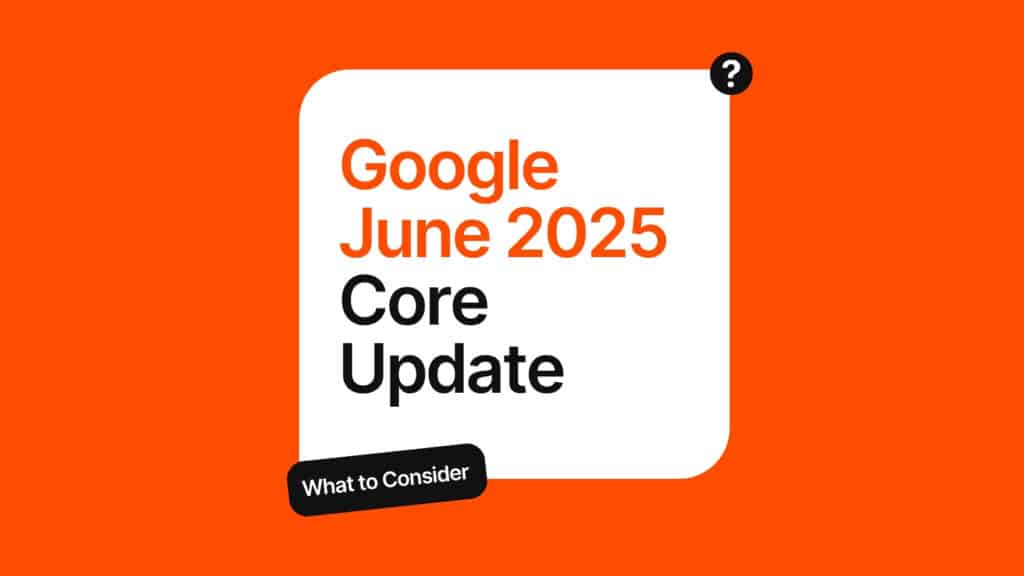Increase your website traffic?

Written by: Benjamin Paine
Managing Director at Digital Nomads HQ
Why trust Digital Nomads HQ?
Digital Nomads HQ is continually recognised as a leading agency & industry "thought-leader" in the digital marketing segment. Known for our expert insight, industry data, and new innovative finding within the Digital Marketing industry. Our agency is frequently cited as a trusted source of credible marketing information, demonstrating the value and impact of our work in shaping industry standards and practices.

The Secret Sauce of a Competitive Paid Search Analysis: Tools + Checklist
In short, a PPC competitor analysis is the heart of any successful PPC campaign. This involves monitoring the PPC performance of competitors to ensure you’re targeting profitable keywords while correctly conveying your brand’s message and not overspending on search ads.
As you’ve landed on this page, there might be a chance that your PPC ads aren’t performing as well as you would’ve liked. This probably has something to do with how your brand is measuring up against your direct competitors’ ads.
This is common as it’s very often hard to decipher what your PPC competition is doing right while realising how you can do it better.
On the other hand, if you aren’t already keeping an eye on what your biggest competitors are doing with their ads, you’re probably missing out on huge opportunities!
For example, perhaps your competitors’ copy is very similar to yours (mimicking your brand), so they can steal clicks and revenue from you – this is called ad hijacking, and if you’re not monitoring this, the effects could be detrimental.
In essence, to improve any PPC campaign, you need to look at what competitors are doing. We’ve made the process easy by outlining everything from A to Z, including the importance of a PPC competitor analysis, top tools (that we’re actually using), and actionable steps to complete the audit.
You don’t have to buckle up; it’s going to be a smooth ride.
Importance of a PPC Competitor Analysis
We’ve already mentioned a couple of reasons why a PPC competitor analysis should be an integral part of your overall strategy. However, before diving deeper into how to do the analysis, you need to be aware of specific factors to look out for to enhance your strategy.
Thus, a PPC competitor analysis is important for:
- Uncovering Competitor Keywords and Spend: By analysing what keywords your competitors are targeting and how much they are investing in them, you can identify gaps in your PPC campaigns. This optimises your ad performance and saves you money by avoiding unprofitable keywords.
- Adjusting Marketing Benchmarks: Competitor analysis allows you to refine marketing benchmarks and recognise opportunities for improving your advertising strategies, which helps you stay proactive and adaptable.
- Positioning Your Business: Understanding competitors’ approaches enables you to keep your actual and potential customers engaged by responding to new trends, changes, and innovative ideas – This ensures that you remain relevant and appealing in a crowded market.
- Gaining a Competitive Advantage: By analysing your competitor’s ad copy and creative strategies, you can position yourself more effectively. Understanding what your competitors are doing allows you to highlight your strengths and ensure they stand out.
So, where should you begin? Up next, we’ll outline how to conduct a full PPC competitive analysis (+checklist), the best tools to use and actionable strategies.
5 Steps to Do PPC Competitor Research & Analysis
Conducting a thorough PPC competitor analysis involves five key steps. By following this structured approach, you can gain valuable insights into your competitors’ strategies and refine your own to ensure you achieve optimal results.
1. Who are Your Competitors?
The first step in any PPC competitor analysis is identifying who your online competitors are. Depending on your business’s growth stage, you may or may not already have a clear understanding of this. Start by compiling a comprehensive list of competitors (direct and indirect). This list will serve as the foundation for your analysis, guiding you through the process of understanding their strengths and weaknesses.
If you already have a clear understanding of who your competitors are, skip to the second point of PPC competitor research. If not, we’ll thoroughly explain the step-by-step process to find your PPC competitors.
Identifying Your PPC Competitors
Who Is Targeting the Same Keywords as Your Brand?
Start by identifying the companies that are bidding on the same keywords as you are (these are the businesses competing for the same target audience, making them direct competitors). You can use tools like Semrush, SpyFu, or Ahrefs to uncover which competitors are going after your brand’s top keywords (more on these tools later).
Who Is Dominating the Top Average Positions?
It’s not just about who is targeting the same keywords but also about who is ranking in the top positions. These competitors are taking valuable clicks away from your brand, which could be impacting your brand’s campaign performance. Tools like Google Ads can provide metrics such as impression share, top-of-page rate, and outranking share, clearly showing who is outranking your brand and where improvements are needed.
What Kind of Competitors Are They?
Understanding the type of competitors you’re up against is key, as not all competitors are the same, and recognising the different types will help you tailor your strategy while helping you focus your efforts on the most relevant threats:
- Direct Competitors: These are businesses offering the same products or services as you are.
- Indirect Competitors: These companies offer different solutions to the same problem.
- Affiliates & Marketing Partners: These are entities promoting your brand’s or their competitors’ products, often for a commission.
- Comparison Shopping Engines: Platforms that aggregate multiple products for comparison, which could include your brand’s offerings.
- Search Arbitrages: Competitors who bid on keywords to drive traffic to another search platform.
- Resellers: Other brands selling or reselling your brand’s products or services.
Where Are They Competing With You (Platforms & Devices)?
Where are your competitors most active? This includes understanding the platforms they’re using (Google Ads, Facebook Ads, etc.), the locations they’re targeting (local, national, or international), and the timing of their campaigns (weekdays, weekends, holidays, etc.). Also, consider the devices they focus on—whether they’re more active on mobile, desktop, or both, as this would make a difference in optimisation efforts.
Why Are They Competing With Your Brand?
Understanding the motives behind your competitors’ PPC efforts can inform your strategy. For instance, direct competitors aim to drive revenue, while affiliates or search arbitragers may be looking for quick commissions. Some competitors might bid on your brand’s keywords as a defensive strategy simply to push up the costs for your brand. Identifying these intentions allows you to tailor your bidding strategies accordingly, whether that involves outbidding them, adjusting your targeting, or improving other aspects of your campaign, like click-through rates (CTRs) and bounce rates.
2. Compile the Keywords Your Competitors Are Targeting
Competitive keywords are the cornerstone of PPC advertising. To effectively compete, you need to know which keywords your competitors are targeting. There are two main approaches to this: using tools or going manual.
- With a Tool: Investing in tools like Ahrefs, SEMrush, or SpyFu (paid tools) can provide in-depth insights into the keywords your competitors are bidding on. These tools often offer free trials or surface-level insights if you’re not ready to commit to a paid plan.
- Without a Tool: Alternatively, you can manually search for valuable keywords and observe which competitors are running ads. Compile a list of keywords and note the placement of competitor ads on the search engine results page (SERP). This manual approach can still yield valuable information, particularly if you thoroughly examine the entirety of page one results.
3. Investigate Your Competitors’ Ads
Once you’ve identified the keywords your competitors are targeting, it’s time to delve into the ads themselves. Google and other search engines offer various ad features that can provide actionable insights into your competitors’ strategies.
When analysing competitor ads, focus on the following elements:
- The tone of Voice: Assess the messaging your competitors use. For example, what value propositions are they highlighting? Are they tapping into specific emotions or using particular grammatical constructions?
- Calls to Action (CTAs): Examine the CTAs your competitors employ. Are they asking visitors to download resources, sign up for newsletters, or make purchases? Understanding their approach can help you refine your own CTAs.
- Ad Elements: Look beyond the headline and body text – Are competitors using sitelink extensions, phone numbers, structured snippets, or lead forms? These elements can significantly boost engagement, so take note of what’s being used effectively.
4. Examine Your Competitors’ Landing Page Strategies
A well-structured ad is only part of the equation; the post-click experience is equally important. Your competitors’ landing pages should be seamless, user-friendly, and geared toward conversion rate improvement. Use the AIDA framework to evaluate their effectiveness:
- A(ttention): Does the landing page immediately grab the user’s attention?
- I(nterest): Does it offer what the user is interested in?
- D(esire): Does it create a desire for the user to take action?
- A(ction): Does it facilitate the desired conversion action?
Landing pages that fall short of the AIDA framework present an opportunity for you to outperform your competitors by creating more compelling post-click experiences.
5. Conclude with a SWOT (Strengths, Weaknesses, Opportunities, and Threats) Analysis
To wrap up your PPC competitor analysis, conduct a SWOT analysis. This involves assessing your own business’s internal strengths and weaknesses against the external market conditions and competitor activities. Identify opportunities for growth and areas where your competitors may pose a threat. The insights gained from the previous steps will inform your SWOT analysis, helping you to refine your PPC strategy moving forward.
Congratulations on completing the PPC competitor analysis framework! To streamline your efforts, we’ve created a checklist summarising these steps. Download it below to kickstart your analysis and start outperforming your competition.

Top PPC Competitor Analysis Tools & Strategies
Before you wrap up your PPC competitor analysis, it’s essential to equip yourself with powerful tools and strategies. Here are some top resources and methods to ensure the success of your next PPC competitor analysis.
1. Google Ads Transparency Center
Similar to Facebook’s Ad Library, Google offers a tool that allows you to view competitor ads—though it’s a bit more hidden. The Google Ads Transparency Center gives you insights into the ads your competitors are running.
Here’s how to access it:
- Search for a Competitor’s Ad: Start by searching a relevant keyword. For example, if you’re in the plumbing business, try “plumbing services.”
- Locate the 3 Dots Next to the Display URL: Above the ad’s headline, you’ll see three dots. Click on them.
- Click “See More Ads This Advertiser Has Shown Using Google”: This will take you to Google’s My Ad Center, where you can explore more ads from the same competitor.
- Type the Competitor’s Name in the Ads Transparency Center: This will allow you to search and view all ads run by that specific competitor.
2. Competitor Ad URLs
If you’re looking for the hidden gems of your competitor’s PPC strategy, their ad URLs might be the key. Although this approach requires a bit more manual effort, it can yield valuable insights if you know what to look for.
- Click on a Competitor’s Ad: Find and click on a competitor’s ad. Pay close attention to the URL.
- Examine the URL for UTMs: Look for UTM parameters after the destination URL. These UTMs can reveal the category of keywords they’re targeting, whether they’re using Google Click IDs for tracking, and how they structure their campaigns.
3. ChatGPT
No 2024 marketing guide would be complete without mentioning the power of AI tools like ChatGPT. These generative AI tools offer countless ways for marketers to gain insights that traditional search engines can’t provide.
One effective strategy is using ChatGPT to analyse the structure of a competitor’s ad or landing page. With the advancements in AI, ChatGPT-4 can dissect the contents of a landing page or PPC ad if you provide the URL. Simply ask ChatGPT to analyse elements such as sentiment, tone of voice, language, value propositions, and CTAs.
The flexibility of ChatGPT allows you to customise your queries for tailored insights. Whether you’re looking for a detailed breakdown of a competitor’s messaging or a deeper understanding of their creative strategies, ChatGPT is a versatile tool that can significantly enhance your PPC competitor analysis.
4. SpyFu
SpyFu is a powerful tool that comprehensively looks into your competitors’ Google Ads strategies. With SpyFu, you can find the long-tail keywords your competitors are bidding on, their ad copy, and even how much they’re spending on those keywords. It allows you to see every keyword they’re purchasing and every ad they’re running.
Using SpyFu, you can identify patterns in your competitors’ bidding strategies and find opportunities to outbid them or target keywords they may have overlooked.
5. Semrush
Semrush is a versatile tool that helps you with PPC competitor analysis and provides features for overall digital marketing strategies. For PPC, Semrush offers advertising research, PPC keyword tools, position tracking, and even social media ad campaign tools.
Simply enter a competitor’s website, and Semrush will reveal information about their biggest competitors, top keywords, ad copy, and even estimated spend. While the accuracy of the spending data can sometimes be debatable, the insights Semrush provides are invaluable, especially for brands advertising on multiple platforms. With Semrush, you can plan, analyse, and continuously improve your brands’ Google Ads campaigns.
6. Ahrefs
Ahrefs is often celebrated as an all-in-one platform, and for good reason. It offers tools for link building, keyword research, competitor analysis, rank tracking, and site audits—all in one place. Regarding PPC, Ahrefs’ keyword explorer tool is particularly valuable. It allows you to discover many keyword options while analysing their competitiveness, relevant traffic potential, and other key metrics, such as global search volume and average monthly clicks.
Ahrefs is ideal for optimising Google Ads campaigns by identifying weak and low-potential keywords, ensuring that your brand’s budget is spent wisely. The platform also integrates well with other tools, offering dedicated dashboards that track live updates in a clean, user-friendly interface.
Putting a Competitive PPC Analysis Into Action
Ready to transform your PPC marketing strategy and outsmart your competition? Our team at Digital Nomads HQ is ready to provide a detailed breakdown of your competitors’ strategies to help you devise a game plan that will outperform them on every level.
Start bettering your PPC strategy today by requesting a no-obligation, free proposal.

"Inside the agency" A Digital marketing podcast
Tune in to our weekly Youtube and Podcasts discussing industry changes, news & hot topics across all digital marketing channels.







